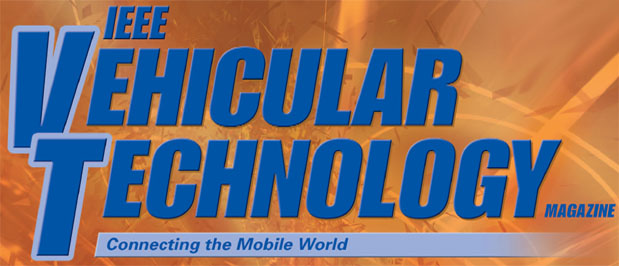Call For Papers:
Special Issue on Integrating Generative AI into Future Internet of Vehicles (IoV)
Important Dates |
|
|---|---|
| Manuscript Submission by: | 7 September 2024 |
| First Round Reviews by: | 16 November 2024 |
| Second Round Submissions by: | 6 January 2025 |
| Second Round Reviews / Editorial Decision: | 15 February 2025 |
| Publication: June 2025 | |
Generative AI (GenAI) has experienced rapid and transformative growth, revolutionizing how we interact with digital environments. Large language models (LLMs) such as GPT-4 and Llama-3 are at the forefront of this innovation, known for their ability to precisely interpret user intents, provide solutions, and assist with task execution. Alongside LLMs, the field of visual media generation has advanced significantly, with technologies like Stable Diffusion, Vision Transformers (ViTs), Diffusion Transformers, Generative Adversarial Networks (GANs), and Variational Autoencoders (VAEs) leading the way. These tools excel in creating high-quality images and videos from textual prompts, expanding the applications of GenAI. These technologies are paving the way for applications in the physical world. For example, recent breakthroughs show that LLMs can effectively process and interpret sensor signals measuring temperature, pressure, acceleration, voltage, and electromagnetic activity. This capability enables them to handle vehicle localization and movement prediction tasks. By integrating multi-modal technologies and leveraging the world knowledge embedded in LLMs, we can more effectively interpret signals from the widespread Internet of Vehicles (IoV) sensors and enhance task and resource scheduling. This integration gives rise to a new paradigm in GenAI-based IoV systems. These systems utilize GenAI's capabilities to detect and predict vehicle and pedestrian trajectories, recommend auto-driving strategies, and generate datasets and environments crucial for advancing other vehicle technologies. This capability provides a safer and more efficient way to evaluate and refine IoV systems under various realistic air, road, and underwater scenarios.
However, the development of GenAI and IoV do not fully align, presenting numerous challenges in adapting IoV network architecture and protocols to support GenAI. For example, the fine-tuning and inference of GenAI rely on widely distributed cognition for sufficient computing resources, requiring the design of new vehicular hardware, distributed IoV network architectures, and distributed training and inference techniques to overcome challenges related to real-time performance, reliability, security, robustness, and privacy faced by running GenAI at vehicle ends. Besides, the IoV signals are fundamentally different from the tokens in NLP, and the input and output signals vary greatly with IoV services. This necessitates bridging the theoretical gap in GenAI within the IoV domain, creating open-source general and specialized datasets, refining algorithms and model architectures, and designing real-time, reliable, scalable, flexible, and secure GenAI training and inference systems suitable for IoV scenarios. Finally, before deploying and operating GenAI in IoV networks, it is necessary to use simulation or emulation tools for a preliminary performance assessment, thus obtaining feasibility and cost analysis in advance.
Topics of interest include but are not limited to:
- GenAI for interactive IoV network management and orchestrationGenAI-based vehicular agents for autopilot
- GenAI-enhanced trajectory prediction, service migration, and offloading optimizations
- GenAI-powered semantic communications in IoV
- GenAI for IoV security and privacy preservation
- GenAI-enabled decision-making and optimizations for mobile IoV applications
- GenAI for integrated sensing and communication, sensor fusion in IoV
- Advanced automotive hardware, IoV architectures and techniques for GenAI training and inference
- Secure and privacy-preserving GenAI training and inference in IoV networks
- Simulation and emulation tools for GenAI performance evaluation in mobile IoV networks
- Reliability, security, robustness, and explainability of GenAI for IoV applications
- Multi-modal GenAI for vehicular applications
- GenAI systems, algorithms, models, datasets for vehicular applications
- Practical, real-world deployments of GenAI applications for IoV
All manuscripts should contain state-of-the-art material presented in tutorial-style, and must adhere to IEEE VTM guidelines.
Submit PDF version of complete manuscripts to ScholarOne Manuscripts™. Papers presenting original and state-of-the art research and technical contributions will also be considered. However, their presentation should be accessible for all readers.
Guest Editors
Gang Sun
University of Electronic Science and Technology of China
Hongyang Du
Nanyang Technological University, Singapore
Abbas Jamalipour
University of Sydney, Australia
Gabriel-Miro Muntean
Dublin City University, Ireland
Lin Cai
University of Victoria, Canada

